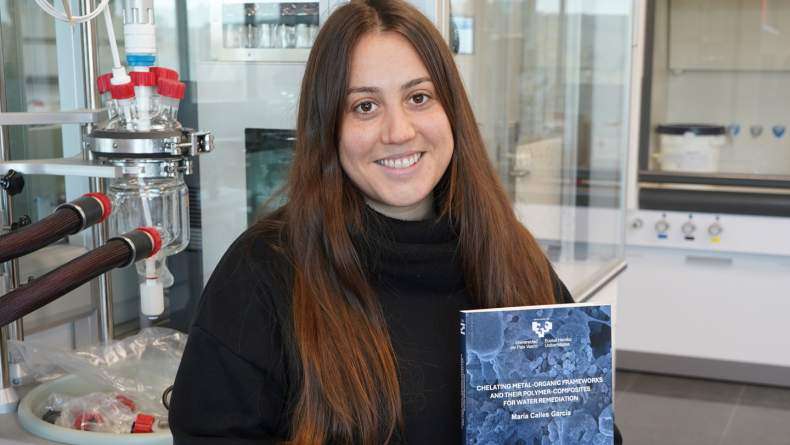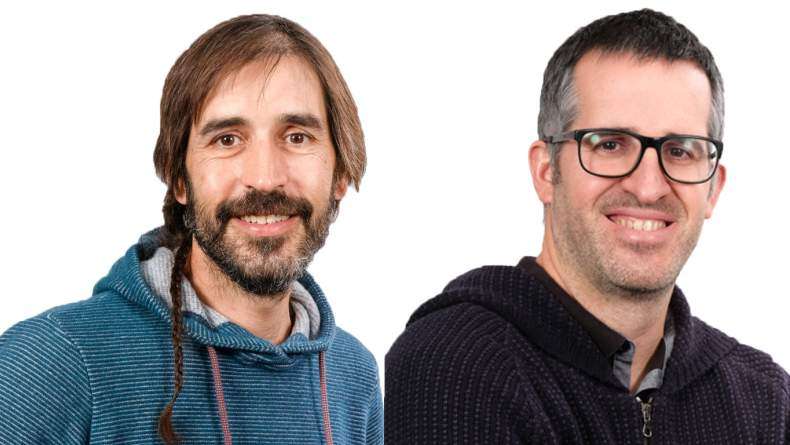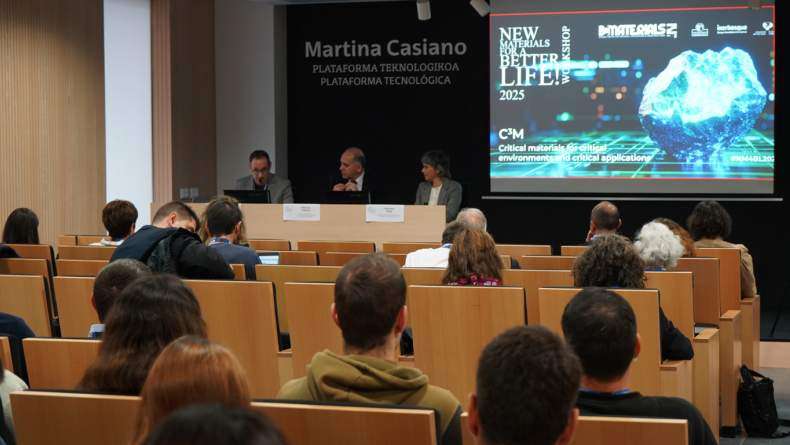BCMaterials Fortnightly Seminar #76 Eduardo Fernández - Roberto Fernández

EDUARDO FERNÁNDEZ
(BCMATERIALS)
GMI sensors in flexible substrates
TBA
ROBERTO FERNÁNDEZ
(BCMATERIALS)
Composite silver vanadium oxide hydrogels and nano-films for environmental remediation and antimicrobial coatings
Nanostructured silver vanadium oxides (SVO) and vanadium oxides (VO), and concretely β-AgVO3 nanoribbons have received considerable attention in the last decade. One of the most amazing consequences of the crystallization of this 1D nano-structures is that β-AgVO3 nano-ribbons can self-assembled into inorganic hydrogels, establishing a 3D non-covalent cross linked framework, which traps water within its pores.
Herein, we report a facile and fast method for the synthesis of nanostructured SVO and slightly reduced VO hydrogel composites with the (β-AgVO3)@(V5+1.6V4+0.4O4.8) formula, hereafter SVO@VO. Moreover, the pollutant sorption capacity, nano-thin film deposition, and antimicrobial activity will be described.
Depending on the concentration of the initial hydrogel, after drying it, several different nano and mesoporous structures are obtained. The mesoporous structure of xerogels is a key point if their potential applications are considered. The capture capacity of the hydrogels and xerogels against several dyes and heavy metals has been proved, with sorption capacities as large as 150 mg/gr for positive dyes, and 600 mg/gr reactive capture of iodine form water. More interestingly, depending on the presence of vanadium oxide nanoribbons on the hydrogels there is a selective adsorption of certain negative charged dyes. As the silver vanadium oxides have been proved to be very effective antibacterial agents we have processed the hydrogels as thin films following different approaches. First, section of controlled thickness of hydrogels have been dried at 80ºC on cellulose filters to obtain regular thin films of 10 µm. Giving a step forward, the hydrogels has been sprayed in glass supports. The thickness of the SVO@VO films has been controlled by accumulative spraying steps, obtaining thin films with thickness from 1 µm to 200 nm. Antimicrobial activity against gram positive and gram negative strains have been proved both in powdered samples and in 10 microns thin films.
Related news
María Calles, BCMaterialseko doktore berria
María Calles García zoriondu nahi dugu UPV/EHUn Materialen Zientzia eta Teknologian doktoretza lortzeagatik. Abenduaren 4an Maríak ‘Chelating Metal-Organic Frameworks and Their Polymer-Composites…Bartzelonako Mikroelektronika Institutuko ikertzaileekin hitzaldi gonbidatua (abenduak 3)
Datorren abenduaren 3an, 12:00etatik aurrera Leioako Martina Casiano auditorioan, BCMaterialsek Bartzelonako Mikroelektronika Institutuko (IMB-CNM) (CSIC) Antón Guimerà eta Xavier Illa ikertzaile…Hitzaldi gonbidatua Liu Yaorekin metal-litiozko bateriei buruz (abenduak 2)
Datorren astelehenean, abenduaren 2an, Liu Yao Shanghai Institute of Applied Physics-eko irakasleak "Li Metal Batteries: From Liquid to Solid-State" hitzaldia aurkeztuko du BCMaterials-en. Hitzaldia…BCMaterials-en urteko workshoparen arrakasta, material kritikoei eskainia
BCMaterialsen urteko workshoparen 2025. edizio arrakastatsuak ehun bat lagun bildu zituen azaroaren 19an Leioan, artearen egoera aztertzeko eta material kritikoei, materialen aplikazio kritikoei eta…



